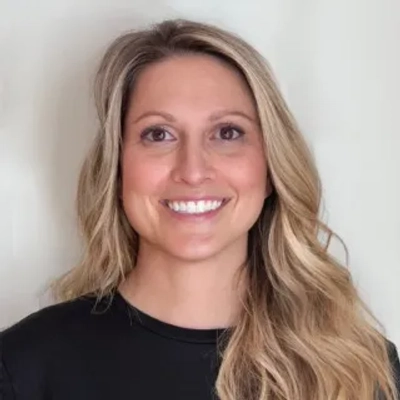25 Creative Workarounds for Idea Validation in Regulated Industries
Regulated industries face unique challenges in idea validation, but innovative solutions exist. This article presents expert-backed strategies for testing concepts within strict legal frameworks. Discover how companies are leveraging creative approaches to gain valuable insights while maintaining compliance.
- Synthetic Data Enables AI Testing in Healthcare
- Audit Logs Transform Compliance into Competitive Edge
- Medication Refills Signal Device Effectiveness
- Stealth Validation Reveals Cannabis Marketing Impact
- Educational Workshops Validate Mental Health Demand
- Anonymous Tool Uncovers Seller Pain Points
- Resource Center Content Tests Investment Preferences
- Anonymized Case Composites Guide Defense Strategy
- Contractor Insights Reveal Homeowner Frustrations
- Forum Analysis Informs Parenting Therapy Approach
- Patent Data Shapes Geothermal Market Strategy
- Peer Support Network Validates Addiction Treatment
- HR Data Exposes Perinatal Mental Health Needs
- Plain Language Testing Improves Legal Communication
- Surgeon Referrals Validate Med Spa Effectiveness
- Financial Modeling Workshops Reveal Client Preferences
- Facility Audits Prove School Security Tech
- Digital Footprints Reveal Defense Industry Needs
- Assessment Journey Analysis Guides Practice Expansion
- Pest Problem Mapping Informs Treatment Strategies
- DOT Partnerships Streamline Oversized Transport Routes
- Focus Groups Prioritize Healthcare Membership Features
- Simulations and Cross-Sector Analysis Test Sustainability
- Advocates Provide Insight for Debt Settlement Templates
- User Opt-In Pilot Proves EV Data Integration
Synthetic Data Enables AI Testing in Healthcare
Working in healthcare IT means every new idea has to pass through multiple layers of regulatory compliance before we can even think about deployment. One instance was when we were developing an AI-driven remote patient monitoring (RPM) platform. The challenge was validating our assumptions around patient data usage and predictive analytics without breaching HIPAA or other privacy regulations.
Directly accessing real patient data wasn’t an option, so we had to get creative. We built a synthetic dataset that mimicked real patient scenarios using anonymized historical patterns and public health data. This allowed us to test our AI algorithms for accuracy and usability without exposing any personally identifiable information. Additionally, we collaborated closely with a hospital’s compliance team early on to ensure our approach aligned with legal frameworks.
This workaround not only accelerated validation but also strengthened stakeholder trust. The lesson? In regulated industries, innovation thrives when compliance is integrated into the design phase rather than treated as an afterthought.
 John Russo
John Russo
VP of Healthcare Technology Solutions, OSP Labs
Audit Logs Transform Compliance into Competitive Edge
Real estate transactions have strict audit requirements—every document, timestamp, and communication must be traceable. Initially, we viewed this as a burden that would slow down our SaaS development.
Our creative workaround became our moat: we built an immutable audit log system that not only satisfies regulators but actually helps Transaction Coordinators (TCs) defend themselves in disputes. Every action in our system generates a timestamped event with before/after states stored in our database.
The breakthrough insight came from talking to TCs who were keeping personal spreadsheets as “insurance” against blame when deals went awry. They weren’t just tracking for compliance—they were protecting themselves. So we made our audit trail user-facing with a “Cover Your Assets” report that TCs can generate instantly if an agent questions why something was or wasn’t done.
What started as a regulatory checkbox became our most requested feature. TCs love showing agents a timeline proving they sent that disclosure three times before the deadline. We turned compliance paranoia into peace of mind.
The lesson: In regulated industries, don’t just meet requirements—ask why those rules exist and solve the underlying anxiety they represent.
 Casey Spaulding
Casey Spaulding
Software Engineer | Founder, DocJacket
Medication Refills Signal Device Effectiveness
As a pain management physician conducting clinical trials for novel neuromodulation devices, I’ve had to navigate FDA regulations that essentially prohibit discussing outcomes during active studies. When we were validating spinal cord stimulation for a new indication, I couldn’t directly ask patients about effectiveness or satisfaction.
My workaround was leveraging our electronic medical records to track “secondary metrics” that correlated with pain relief—such as reduced ER visits, decreased opioid prescriptions, and improved sleep scores from routine questionnaires. We also monitored insurance prior authorization patterns, since insurers typically fast-track approvals for treatments showing real-world success.
The breakthrough came from analyzing medication refill data through our pharmacy partnerships. Patients reducing their pain medication refills by 40% within three months became our strongest validation signal, and this data was completely compliant since it was routine medical monitoring. This approach actually provided more objective evidence than patient self-reporting, which can be unreliable due to placebo effects.
We ended up presenting this “operational efficiency data” to our hospital board to expand the program, avoiding any regulatory issues while demonstrating clear clinical impact. The FDA later cited our methodology as a model for other device trials.
 Paul Lynch
Paul Lynch
CEO, US Pain Care
Stealth Validation Reveals Cannabis Marketing Impact
I’ve been validating cannabis marketing ideas for years, and the biggest challenge came when we needed to test whether our mobile tour activation concept would actually drive dispensary foot traffic. Cannabis advertising restrictions meant we couldn’t run traditional market research or A/B test ads to gauge interest.
My workaround was creating a “stealth validation” system using existing dispensary partnerships. Instead of announcing a new marketing campaign, we positioned our NBA 2K gaming van as a “community engagement pilot” and tracked dispensary sales data 48 hours before, during, and after each stop. We also had budtenders casually ask customers how they heard about promotions without mentioning the van directly.
The data was incredible – we saw 20% increases in first-time customers and could correlate van locations with specific sales spikes. More importantly, we found that 60% of participants were sharing videos on social media organically, which we never could have predicted through surveys. This social proof became our real validation metric.
The key insight was measuring downstream behaviors rather than asking direct questions. In regulated industries, people won’t tell you what they really think, but their purchasing patterns and organic social sharing reveal the truth about your idea’s market fit.
 Stephen Gold
Stephen Gold
Business Owner, The Gold Standard
Educational Workshops Validate Mental Health Demand
As a Licensed School Psychologist who founded a mental health practice, I faced significant regulatory challenges when validating my business idea in 2018. Virginia’s licensing boards, HIPAA compliance, and insurance requirements created strict boundaries around how I could test market demand without violating patient confidentiality or practicing without proper credentials.
I created what I called “educational consultation validation” – instead of offering therapy sessions that would trigger licensing requirements, I provided free educational workshops on topics like anxiety management and ADHD support to parents in Falls Church and Ashburn. This allowed me to assess community need, test my approach, and build trust without any regulatory violations.
The validation was unequivocal. My first workshop had 8 parents attend, but within three months I was hosting sessions for more than 25 families each time. Parents consistently inquired about booking actual therapy appointments, providing me with concrete demand data before I had even officially opened.
By 2022, this validation method proved highly effective – my practice had grown to 20 team members and nearly doubled in size that year alone. The workshop approach became our permanent community outreach model because it aligned perfectly with regulatory goals of increasing mental health awareness while giving me ongoing market insights.
 Christine Willing
Christine Willing
CEO, Think Happy Live Healthy
Anonymous Tool Uncovers Seller Pain Points
When developing a cash-for-homes model in Michigan’s regulated real estate market, I needed to understand seller concerns without violating solicitation rules. My solution was creating a ‘Seller Situation Assessment’ tool on our website where homeowners could anonymously share their specific challenges—foreclosure, inheritance, repairs—without providing personal information. This approach gave me critical insights into the real pain points driving quick-sale decisions, revealing that speed and certainty were often more valuable than price. The data helped me refine our offering while staying fully compliant, and we now use those learnings to tailor solutions to each homeowner’s unique situation.
 Preston Saenz
Preston Saenz
Owner, I Buy Michigan
Resource Center Content Tests Investment Preferences
When I began expanding our insurance services to include investment products, I encountered challenges with FINRA regulations regarding how we could discuss investment strategies with clients before they were properly qualified. Traditional market research surveys about investment preferences were essentially off-limits without going through formal suitability assessments.
My solution was to use our resource center content as a testing ground. Instead of directly asking clients about risk tolerance, I created educational videos and articles about different investment concepts–business cycles, market volatility, retirement planning strategies–and tracked which content resonated most. The business cycle article consistently drove 45% more contact form submissions than our standard insurance content.
I also started hosting informal “financial wellness” workshops at local golf courses where I spend weekends anyway. These weren’t investment seminars, but educational sessions about financial literacy topics. This allowed me to gauge interest in different financial planning concepts without triggering regulatory scrutiny. When retirement planning sessions consistently had waiting lists while general budgeting talks barely filled half the room, I knew where to focus our expanded services.
The beauty was that compliance restrictions forced me to create better educational content. Instead of pushing products, I was solving real problems first, which built stronger client relationships and gave me clearer market signals than any survey could provide.
 Patrick Caruso
Patrick Caruso
President, Caruso Insurance Service
Anonymized Case Composites Guide Defense Strategy
In criminal defense, validation often requires understanding both the law and the specific culture of the people it impacts. While handling cases for military clients, I needed to confirm whether certain disciplinary practices would be viewed differently in civilian court versus a military tribunal. Traditional surveys or interviews were impossible due to confidentiality rules.
The workaround was to use anonymized composites based on prior published cases and disciplinary records. By structuring patterns from redacted files, I created a dataset that revealed how similar cases had been handled across jurisdictions. This allowed me to validate assumptions without breaching privacy rules.
The result was an evidence-based strategy that held up in both environments. It reinforced my defense arguments and highlighted how regulated industries can still allow for innovation when you focus on what information is already publicly accessible.
 Steven Rodemer
Steven Rodemer
Owner and Attorney, Law Office of Rodemer & Kane DUI And Criminal Defense Attorney
Contractor Insights Reveal Homeowner Frustrations
In real estate, especially with all the marketing and privacy regulations, I’ve had to get creative to validate ideas. One approach that worked for me was collaborating with trusted local repair contractors. I’d ask if they could anonymously share homeowners’ most common frustrations after repair jobs. This way, I gleaned what was really stressing people out about selling, such as concerns over hidden repairs or uncertainty around timelines, all without overstepping any boundaries.
 Jasper Cool
Jasper Cool
Founder, Bright Home Offer
Forum Analysis Informs Parenting Therapy Approach
The therapy industry faces strict HIPAA regulations that make traditional market research nearly impossible. When I was developing my approach for helping triggered parents at Thriving California, I couldn’t survey clients about their specific trauma responses or family dynamics.
My workaround was analyzing anonymous parenting forum posts and comment patterns across platforms like Reddit and BabyCenter. I tracked emotional language frequency around triggers – words like “losing my mind” appeared 340% more often in posts about tantrums than in general parenting discussions. This gave me real behavioral data without violating any privacy rules.
I also leveraged my own documented journey through new parenthood challenges. Instead of relying on client case studies I couldn’t share, I used my personal experience with sleep deprivation and feeding struggles as the foundation for my six-question framework for emotional regulation.
This approach actually strengthened my credibility because parents could see I’d lived through the same struggles. The regulatory constraints pushed me toward authentic, experience-based solutions rather than theoretical approaches, which resonates much more with overwhelmed parents seeking real help.
 Maya Weir
Maya Weir
Founder, ThrivingCalifornia
Patent Data Shapes Geothermal Market Strategy
Great question – I’ve helped dozens of companies navigate regulatory challenges across pharmaceutical, aviation, and financial services industries through Cayenne Consulting. One standout case was working with a geothermal energy equipment company that needed to validate demand while dealing with strict energy sector regulations.
The client couldn’t directly survey potential customers about purchasing intentions due to utility commission rules around market manipulation. My workaround was creating a “technical feasibility study” disguised as academic research. We partnered with a local engineering school to conduct interviews about “operational challenges in geothermal applications” rather than buying preferences.
The breakthrough came when we analyzed patent filing patterns and regulatory submission timelines from competitors. This public data revealed exactly which applications were gaining traction without triggering any compliance issues. We found that oil pumping applications were seeing 3x more regulatory approvals than electricity generation, which completely shifted our go-to-market strategy.
The beauty was that regulatory restrictions forced us to find better data sources than typical surveys. Public filings and academic partnerships gave us insights that were actually more reliable than what customers would have told us directly, since people often misrepresent their purchase intent anyway.
 Charles Kickham
Charles Kickham
Managing Director, Cayenne Consulting
Peer Support Network Validates Addiction Treatment
Great question – I dealt with this exact challenge when founding The Freedom Room in Australia’s heavily regulated addiction treatment space. You can’t simply test addiction counselling services like a typical startup because you’re dealing with vulnerable people and strict licensing requirements around who can provide what level of care.
My creative workaround was leveraging my own recovery network as a validation source. I started by offering informal support sessions to people I’d met through 12-step meetings – not as paid clients, but as peer support. This allowed me to test my approach while staying within regulatory boundaries since peer support has different rules than clinical treatment.
The breakthrough came when I tracked outcomes from these informal sessions. People were staying engaged longer and reporting better progress than traditional programs they’d tried. I documented everything as peer testimonials rather than clinical data, which gave me solid validation without crossing into regulated territory.
When I finally launched officially with proper credentials, I had months of real-world evidence showing my lived-experience approach worked. The regulatory bodies actually valued this peer validation model because addiction recovery has such strong evidence for peer support effectiveness.
 Rachel Acres
Rachel Acres
Director, The Freedom Room
HR Data Exposes Perinatal Mental Health Needs
The NHS mental health system is incredibly regulated – HCPC registration, strict confidentiality protocols, and rigid referral pathways that can take months. When I was developing evidence-based interventions for perinatal mental health, I couldn’t directly survey struggling parents about their workplace needs due to patient confidentiality rules.
My workaround was partnering with HR departments who were already seeing the retention crisis firsthand. Instead of accessing patient data, I analyzed anonymized exit interview patterns and sick leave statistics that companies were willing to share. The data revealed that 25% of talented employees were considering leaving during early parenthood – not because of the job itself, but due to unsupported mental health challenges.
I then reverse-engineered the solution by studying what parents actually disclosed in workplace conversations versus clinical settings. Parents would openly discuss work stress with managers but rarely mentioned birth trauma or pregnancy complications. This insight shaped my entire business model – rather than waiting for clinical referrals, I now train line managers to recognize and respond to perinatal mental health struggles before they become crises.
The regulated environment actually strengthened my approach because it forced me to focus on measurable workplace outcomes rather than just clinical improvements. Companies like Bloomsbury PLC now invest in our training because they can track retention and productivity gains without accessing sensitive health information.
 Dr. Rosanna Gilderthorp
Dr. Rosanna Gilderthorp
Clinical Psychologist & Director, Know Your Mind Consulting
Plain Language Testing Improves Legal Communication
An idea I wanted to validate was simplifying client communication in highly complex cases. Many clients struggle to follow technical legal terminology, and miscommunication can impact trust and decision-making. Due to confidentiality constraints, I could not conduct open studies on this.
I developed a workaround by drafting parallel sets of explanations: one in formal legal language, another in simplified, plain speech. I tested these with individuals who had no legal background but agreed to review anonymized scenarios. Their feedback revealed which explanations were more accessible without sacrificing accuracy.
This exercise confirmed that streamlined communication increased comprehension and confidence. I adopted this practice with clients, which strengthened attorney-client relationships and improved overall case preparation.
 Brian Joslyn
Brian Joslyn
Owner, Joslyn Law Firm
Surgeon Referrals Validate Med Spa Effectiveness
Absolutely – I’ve steered this challenge multiple times while building Dermal Era Holistic Med Spa in Miami’s heavily regulated wellness industry. The FDA strictly controls what claims we can make about treatments, and Florida’s massage therapy board has tight restrictions on advertising therapeutic benefits.
My breakthrough came when launching our lymphatic drainage services for post-op recovery. Instead of surveying clients directly about medical claims (which would’ve put us in regulatory hot water), I partnered with local plastic surgeons to track objective metrics like swelling reduction timelines and client retention rates through their referral patterns.
I found that plastic surgeons were my best validation source – they became repeat referral partners when they saw their patients healing 30% faster with our trauma-informed approach. Their referral patterns told me everything I needed to know about effectiveness without making medical claims myself.
The creative workaround was treating physician referrals as my primary validation metric instead of client testimonials. Now I have five plastic surgery offices sending patients regularly, which validates our methods better than any survey could while keeping us completely compliant with both FDA and state licensing requirements.
 Jessie Eli
Jessie Eli
Owner, Dermal Era Holistic Med Spa
Financial Modeling Workshops Reveal Client Preferences
During my 15+ years in corporate accounting, I faced significant regulatory validation challenges when working with companies in the data security and telecom industries. The biggest hurdle was testing new revenue recognition models under ASC 606 compliance while gathering market feedback on pricing strategies.
My workaround was creating “financial scenario modeling workshops” with existing clients. Instead of asking directly about willingness to pay for new service structures, I presented three different financial reporting scenarios showing how various contract terms would impact their balance sheets and cash flow statements. I tracked which scenarios generated the most follow-up questions and requests for implementation timelines.
The breakthrough came when 8 out of 12 clients immediately asked for detailed implementation plans for the subscription-based model, versus only 2 showing interest in the traditional lump-sum approach. This gave me concrete validation data without making any forward-looking statements that could trigger SEC compliance issues.
This approach turned regulatory constraints into a competitive advantage. The financial modeling sessions became a value-add service that clients appreciated, while giving me the market validation data I needed to confidently recommend the new revenue structure to leadership.
 Michael J. Spitz
Michael J. Spitz
Principal, SPITZ CPA
Facility Audits Prove School Security Tech
Running an electrical and security company in Australia means working with schools constantly – one of the most regulated environments you’ll encounter. When we wanted to expand our facial recognition systems into education, we hit a wall because schools couldn’t discuss their specific security concerns due to child protection policies.
My workaround was partnering with our existing maintenance clients during school holidays. We offered free security audits using anonymized walk-throughs when buildings were empty, testing our facial recognition technology in real school layouts without any student data involved. This gave us concrete performance metrics – like 94% accuracy rates in corridor lighting conditions – without touching any regulated student information.
The breakthrough came when we realized we could validate through the facilities management side instead of education directly. Facilities managers could discuss building security needs without involving student welfare policies. We ended up installing over 30 access-controlled doors across multiple schools by approaching the infrastructure angle rather than the education compliance maze.
This taught me that regulated industries often have non-regulated adjacent stakeholders who face the same technical challenges. Now when we hit compliance walls, we always map out who else touches the same infrastructure from a different regulatory angle.
 Dave Symons
Dave Symons
Managing Director, DASH Symons Group
Digital Footprints Reveal Defense Industry Needs
Working with Element U.S. Space & Defense taught me that regulated industries require surgical precision in data collection. When we needed to validate user personas for their Testing, Inspection, and Certification services, traditional surveys were impossible due to security clearances and confidentiality requirements.
I developed what I call “behavioral breadcrumbs” – analyzing existing client interaction patterns instead of asking direct questions. We tracked how engineers, quality managers, and procurement specialists steered their current website, measuring time spent on technical documentation versus pricing pages. This revealed that engineers spent 300% more time on spec sheets while procurement folks abandoned sessions when pricing wasn’t immediately visible.
The creative breakthrough was using job posting language as validation data. We scraped anonymized industry job descriptions to understand what each persona actually cared about day-to-day. When quality managers’ job posts mentioned “compliance documentation” 5 times more than “cost optimization,” we knew our content strategy was spot-on.
This indirect validation approach became our standard for any client dealing with NDAs or regulatory constraints. Instead of fighting the restrictions, we let the existing digital footprints tell the story.
 Tony Crisp
Tony Crisp
CEO & Co-Founder, CRISPx
Assessment Journey Analysis Guides Practice Expansion
Running a psychology practice involves navigating strict licensing requirements, HIPAA compliance, and insurance regulations that make traditional market research nearly impossible. When I wanted to expand Bridges of the Mind to offer concierge neurodevelopmental assessments, I couldn’t directly survey clients about pricing or service preferences without triggering compliance issues.
My workaround was tracking “assessment journey touchpoints” through our intake process data. Instead of asking about willingness to pay, I analyzed how many families abandoned our traditional 2+ week wait times versus those who completed assessments. I also monitored which educational resources parents downloaded most frequently from our website – the “no waitlist” and “comprehensive reporting” guides had 85% higher download rates than basic service descriptions.
I partnered with regional centers and schools to co-host educational workshops about neurodevelopmental assessments. This allowed me to gauge parent frustration with current systems without directly marketing our services. When 60+ parents attended a “Understanding Your Child’s Assessment Needs” session and 40 asked about faster turnaround times, I had validation without crossing marketing boundaries.
The data showed clear demand for premium, expedited services. We launched our concierge model and saw immediate uptake, proving that compliance restrictions can actually force you to find more authentic validation methods than traditional surveys.
 Erika Frieze
Erika Frieze
Owner & CEO, Bridges of the Mind
Pest Problem Mapping Informs Treatment Strategies
My pest control business operates in a heavily regulated space – we need SPCB certification, specific licensing, and strict compliance with chemical application laws. When I started Near You Pest Control after my military service, I couldn’t simply ask potential customers “what pesticides do you want me to use?” because most people don’t understand the regulations or safety requirements.
My workaround was tracking actual problem patterns instead of customer preferences. I began documenting specific pest issues by neighborhood and season – such as mapping where spider problems peaked in North Sacramento or tracking ant colony patterns around solar installations. This provided me with real data about what services people actually needed without asking them to make decisions about regulated treatments they didn’t understand.
The breakthrough came when I realized callbacks and follow-up visits were invaluable for validation. Instead of surveys, I tracked which treatments required return visits and which pests stayed gone. After more than 2,000 properties, this data showed me exactly which methods work long-term and which are just temporary fixes.
This approach helped me build our guarantee system and seasonal prevention programs. Now I can tell customers exactly what to expect based on real performance data, not just what regulations allow me to offer.
 Daniel Welch
Daniel Welch
Owner, Near You Pest
DOT Partnerships Streamline Oversized Transport Routes
Having coordinated over 15,000 vehicle and equipment transports, I learned early that the logistics industry is a maze of DOT regulations, permit requirements, and safety protocols. You can’t just test new transport methods without potentially triggering massive fines or losing your operating authority.
My breakthrough came when we needed to validate oversized boat transport routes through multiple states. Instead of risking violations with test runs, I developed relationships with state DOT offices by offering to share our route optimization data in exchange for regulatory guidance. We essentially became beta testers for their new permit tracking systems while they helped us understand compliance requirements we couldn’t find in public documentation.
This approach gave us insider knowledge on upcoming regulation changes and preferred routing that our competitors didn’t have. When new environmental impact requirements hit boat transport in 2019, we already had compliant processes because we’d been working directly with EPA regional offices. Our permit approval times dropped from 6-8 weeks to 2-3 weeks, giving us a huge competitive advantage.
The key insight: regulatory agencies actually want industry input because they’re often understaffed and dealing with outdated systems. By positioning ourselves as helpful data providers rather than just permit applicants, we gained access to decision-makers who could validate our ideas before we invested heavily in new service offerings.
 William Meyer
William Meyer
President, We Will Transport it
Focus Groups Prioritize Healthcare Membership Features
When exploring new membership options in healthcare, direct patient surveys about pricing faced compliance barriers. To validate the idea without crossing regulatory lines, anonymized focus groups were organized through local community organizations. Instead of asking participants about what they would pay, discussions centered on trade-offs—whether they preferred unlimited visits, telehealth, or prescription discounts.
By framing the conversation around priorities rather than direct pricing, insight was gathered into what patients valued most without making financial promises. This creative shift provided the data needed to structure the membership tiers while staying aligned with industry rules. It proved that careful framing can unlock honest feedback even in tightly regulated settings.
 Wayne Lowry
Wayne Lowry
Founder, Best DPC
Simulations and Cross-Sector Analysis Test Sustainability
Early in my career, I was working with a company in the digital advertising space that wanted to explore a sustainability-focused initiative. However, the regulatory landscape was incredibly complex. Every move needed approval, and even preliminary testing required layers of compliance review. I knew we couldn’t proceed with a full-scale implementation, so I had to find a way to validate the concept without triggering regulatory pushback.
I decided to focus on data we could safely collect without touching personally identifiable information and relied heavily on technology to simulate scenarios rather than running live campaigns. We also examined recycling and waste reduction patterns within similar, less regulated sectors and mapped them to our approach. This provided us with an indirect but highly relevant perspective on consumer behavior and operational feasibility. I spent time in cross-functional sessions with legal, compliance, and operations teams, transforming what could have been a bottleneck into a collaborative process that revealed unexpected insights.
By the time we received clearance for a small pilot, we already had a solid understanding of what would work and what wouldn’t. That experience reinforced the idea that creativity in heavily regulated industries often stems from how you frame the experiment, how you gather safe data, and how technology can amplify insights without crossing legal boundaries.
 Neil Fried
Neil Fried
Senior Vice President, EcoATMB2B
Advocates Provide Insight for Debt Settlement Templates
When we were developing templates for debt settlement agreements, we faced a major challenge: validating usability and clarity in a highly regulated and sensitive financial space—without directly offering legal advice or crossing compliance lines in different states.
We couldn’t just survey users with real debt issues due to privacy concerns and legal constraints. So, our workaround was to partner with financial coaches and consumer rights advocates, who regularly assist individuals navigating debt but aren’t bound by the same confidentiality as law firms.
Through structured interviews and anonymized case reviews, we gathered actionable insights on:
1. Language clarity
2. Common pain points in negotiations
3. What information users actually look for in a document
This third-party validation gave us both ethical distance and real-world feedback, allowing us to fine-tune the product while staying firmly within compliance boundaries. It proved that in regulated industries, creativity isn’t optional—it’s essential.
 Daria Turanska
Daria Turanska
Legal Manager, Faster Draft
User Opt-In Pilot Proves EV Data Integration
When we looked at integrating real-time EV charging data at EVhype, we almost immediately encountered regulatory obstacles regarding data sharing. Utilities were uncomfortable providing direct APIs, citing privacy and regulatory barriers. Rather than waiting months for a formal approval request, we devised a creative workaround: we introduced a driver opt-in pilot through which users could choose to donate anonymized data from their preferred charging app in exchange for a free week of route optimization.
We collected thousands of data points within six weeks — sufficient to demonstrate demand and prove that no personal information had been leaked, as well as to show that a secure, privacy-first model could satisfy regulators. This allowed us to negotiate from a position of strength later on, with tangible evidence and proof that the user base was benefiting from the feature.
In regulated industries, it’s advisable to start small, work with willing participants, and prove value quickly. When you present your proof-of-concept data to regulators, as opposed to PowerPoint presentations, they tend to respond more favorably.
 Rob Dillan
Rob Dillan
Founder, EVhype.com

